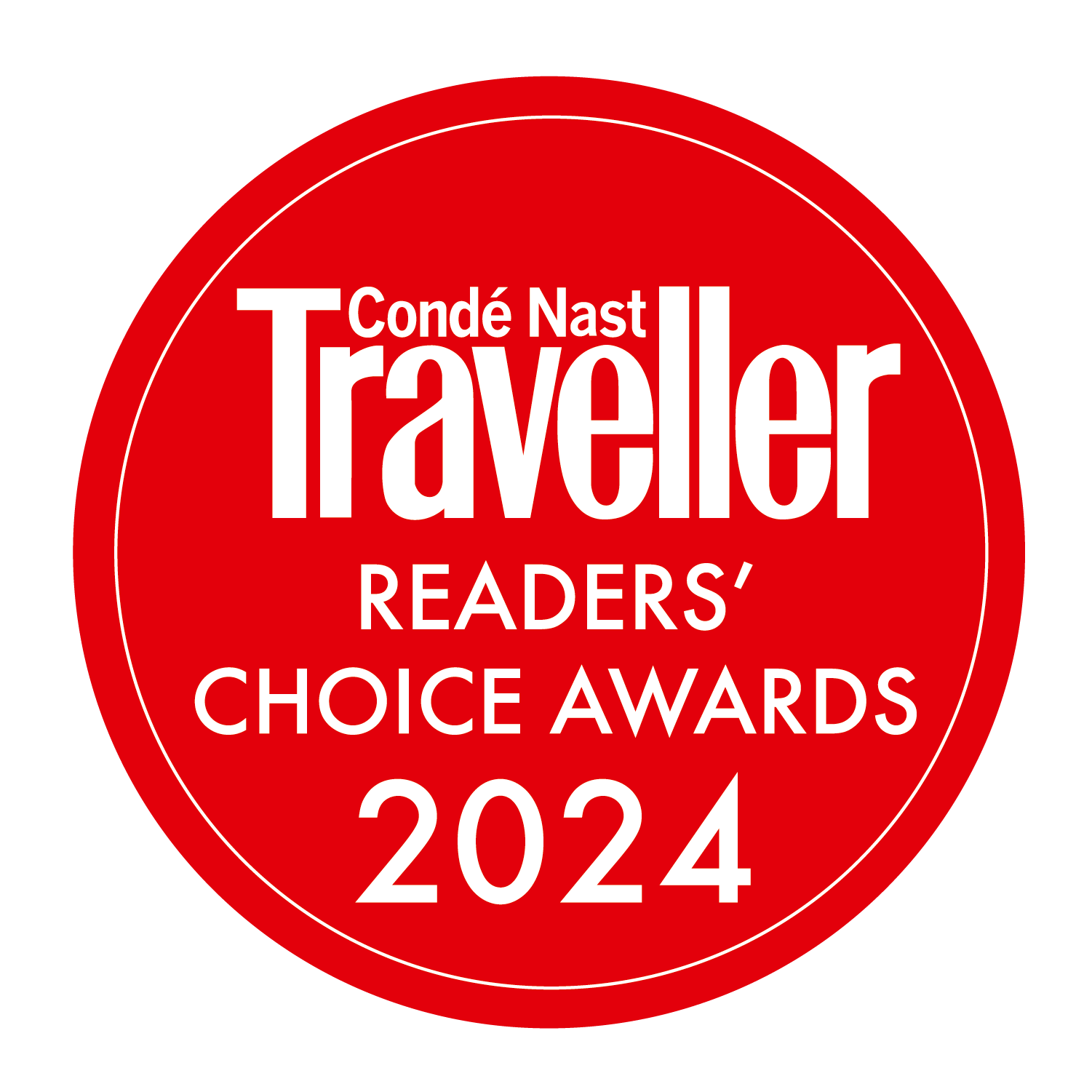Florence is dauntingly monumental and basks in its past glories, its weighty Renaissance history. More than any other city, Florence is defined by its artistic heritage. The churches, palaces and galleries are studded with the world’s greatest concentration of Renaissance art and sculpture. The city is both blessed and burdened by artistic overload. In 1743 Anna Maria Lodovica, the last of the Medici line, left her property to Florence, ensuring that the Medici collections remained intact forever. As a result, Florence is still awash with treasures. Despite devouring the checklist of must-see sights, beware of suffocating under the weight of treasures. Allow time for aimless wandering. Beyond the selfie sticks and statuary awaits a funky foodie haunt with sleek cafes, superb cooking and seriously edible markets. Florence is not fusty. Nor has the greedy city lost its gutsy Tuscan soul: traditional inns still serve earthy peasant fare, including macho steaks.
Why not travel to Tuscany and see why we love it so much! Find your perfect Tuscan villa today and browse our collection near Florence.
Contact our Villa Specialist, who can help you find the ultimate Tuscan villa tailored to you.
Florence
-
-
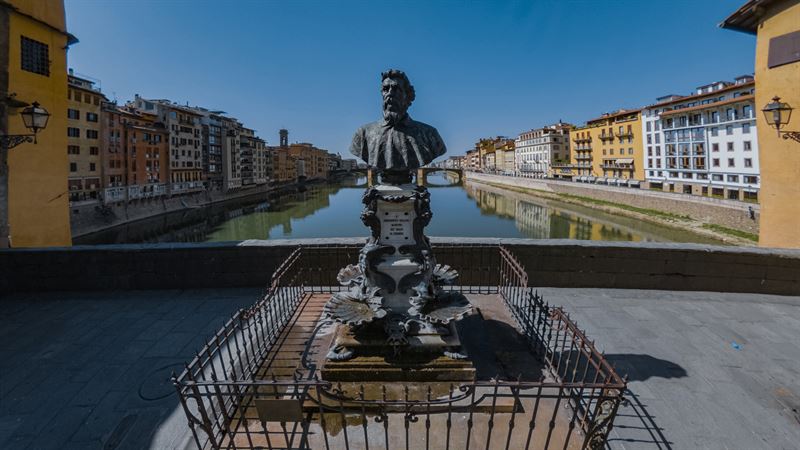
Top Things To Do
Balance visits to galleries with wanderings in search of the perfect trattoria or the perfect view. Do buy a Firenze Card online. It’s somewhat pricey but after four visits pays for itself and means you can skip the queues and enter the top museums and monuments without wasting your precious time in Florence. It lasts for 72 hours and allows free admission to EU citizens who are under 18 but accompanied by a city card-holder. Alternatively, a Grande Museo del Duomo ticket accesses all the monuments on Piazza del Duomo. The official online ticket-booking site for state museums is B-ticket, but there are many unofficial ones.
-

1. Piazza del Duomo – marvel at the monumental centre
Holding up to 20,000 people, the enormous Duomo (Cathedral) only serves to emphasise the smallness of the surrounding square and the narrowness of the adjoining streets. Now fully pedestrianised, the square is yours to wander freely, possibly even in a horse-drawn carriage, which can be picked up in the piazza. The Duomo is by far the biggest building for miles around and it is still Brunelleschi’s dome that defines Florence, over 500 years after it was built. Out of respect for Brunelleschi’s achievement, the city forbade the construction of any building taller than the Duomo. The Renaissance architect’s stroke of genius was to devise a cunning system of an inner shell and outer dome to distribute the weight of the cupola, with thick walls negating the need for further buttressing. If you have a head for heights, ascend to the gallery of the dome. Next-door, Giotto’s multicoloured Campanile (Belltower) soars above a low-slung skyline. The climb to the top is worth the effort for the panoramic views. The third star on the square is the Battistero (Baptistry), the oldest building in the city, rebuilt in the 11th century and used as the cathedral of Florence until 1228. Visit the Museo dell’Opera del Duomo (Cathedral Museum) to see the original sculpture and statuary that was once displayed in the cathedral. Highlights include Michelangelo’s Pietà, sculpted for his own tomb, and the Gates of Paradise, the original doors created for the Baptistry. The revamped museum now gives a truer sense of the majesty of the works in their rightful setting.
Address: Piazza del Duomo, Florence
Web: www.ilgrandemuseodelduomo.it -
2. Galleria degli Uffizi – see a showcase of Renaissance art
The Uffizi Gallery is simply the world’s greatest collection of Italian art. As such, the gallery is both a feast for the senses and an indigestible banquet. The Uffizi has recently been revamped, with seven new rooms displaying works by Botticelli and other Early Renaissance artists. Botticelli’s Rebirth of Venus and Primavera have had a rehang, allowing for more space around the works, as well as for thematically linked works to be displayed nearby. Long-hidden works have come out of the Uffizi storehouses, along with newly acquired works, such as a huge Botticelli Annunciation, painted for the Hospital of San Martino in via della Scala. The Uffizi was once the administrative nerve centre of the Tuscan grand duchy, reinforcing the chain of command between the Palazzo Vecchio, the Medici power-base, and the court at the Pitti Palace. Under Francesco de Medici (1541-87), one floor became a gallery designed to showcase the glory of the ruling Medici. On display are paintings from Giotto to Botticelli, Piero della Francesca, Michelangelo, Leonardo da Vinci, Raphael, Titian and Caravaggio. Since most visitors come to see the Early Renaissance works, the High Renaissance rooms are far more peaceful. Expect crowds in the Leonardo da Vinci room, which pays tribute to the greatest genius of the age, the master of the High Renaissance style. What you choose to be moved by will depend on your mood.
Address: Piazzale degli Uffizi, Florence
Web: www.uffizi.it -

3. Palazzo Vecchio – for a symbol of Florentine power
The Palazzo Vecchio, with its bold swallowtail crenellations and asymmetrical belltower, is the most evocative of city symbols. This town hall, under different guises, has been the emblem of Florentine power since the 14th century. The crenellated palace overlooks the Piazza della Signoria, the city’s grandest square, and a copy of Michelangelo’s David. Inside the palace, Vasari’s monumental staircase leads to the Salone dei Cinquecento, where members of the Great Council met. The interior is adorned with Renaissance art, including works by Michelangelo. The Palazzo Vecchio is one of the best Florentine museums to have moved into the 21st century in terms of multimedia presentation. En route, the palace reveals different stories, including insights into Medici court life. For a moody tour, opt for an evening visit: the Palazzo Vecchio is usually open until very late between April and September. One tour explores the tower and battlements while another takes you across a lofty footbridge to the Uffizi Gallery, essentially the first part of the Vasari Corridor (book a time slot).
Address: Piazza della Signoria, Florence
Web: http://museicivicifiorentini.comune.fi.it/en/palazzovecchio/ -

4. Galleria dell’Accademia – for Michelangelo’s David
Most visitors dutifully come to gasp over Michelangelo’s David and then call it a day, scarcely realising that this is one of the city’s finest galleries. Although many treasures have moved to the Uffizi and San Marco, the remaining array of Florentine Byzantine and Gothic art justifies a visit. Even so, the added inducement of a certain Michelangelo is what pulls in the crowds. The colossal statue of David was carved between 1501 and 1504 from a single piece of marble. The masterpiece established Michelangelo as the foremost sculptor of his time before the age of 30. The foremost sculptor of his age, or arguably of all time, is well represented by his magnificently unfinished Four Slaves and by the authentic David, the centrepiece of the museum. Even if his paintings have a rare sculptural quality, only the sculpted naked body can express Michelangelo’s most sublime concepts. When criticising the gigantism of the work, remember that the statue was intended for a large civic space, not designed to be cooped up in a corner of a museum. To Florentines, the statue became both the symbol of liberty and a symbol of the artistic aspirations of the city. The statue now standing in front of the Palazzo Vecchio is an impressive copy.
Address: Via Ricasoli 60, Florence
Web: www.galleriaaccademiafirenze.beniculturali.it/ -
5. Museo del Bargello – for Renaissance sculpture
As the oldest surviving seat of government in Florence, the Bargello preceded the Palazzo Vecchio. Unlike the Accademia, the Bargello would be a major site even without its treasure-trove. The collection clearly shows the transition between statuary flaunted as public symbols and sculpture appreciated as private treasures. The Bargello is also the best place in which to gain a sense of the inter-connectedness of Florentine Renaissance sculpture. It provides a clear overview, with works of art by the greatest masters. Moreover, despite the virtuosity of Michelangelo, the Bargello is more of a shrine to his predecessor, Donatello, the only sculptor to lay claim to equal gifts. Unlike Michelangelo’s work, Donatello’s sculpture betrays little sign of creative torment and virtuosity for virtuosity’s sake. However, in the Bargello, at least, Donatello is the undoubted star. If in pursuit of Renaissance sculpture, head straight for the Donatello gallery, followed by the Verrocchio and della Robbia rooms. Donatello’s David (from 1430–40) is a small bronze renowned for being the first nude since antiquity. It differs dramatically from Michelangelo’s masterpiece not just in size and material, but also in its coyness and melancholy, which some view as more faithful to David’s youth.
Address: Via del Proconsolo 4, Florence
Web: www.bargellomusei.beniculturali.it -
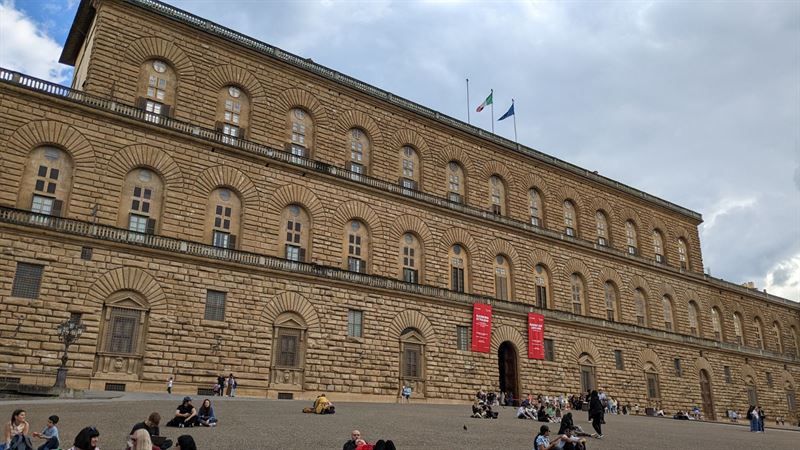
6. Palazzo Pitti and Giardino di Boboli – for a glorious palace and gardens
The Palazzo Pitti, the most grandiose of all Florentine residences, became the seat of government for the Medici dukes. Set in a massive Renaissance palace that dominates the Oltrarno, the Pitti houses seven museums, and leads to the lovely Boboli gardens, once a pastoral Medici pleasure-dome. Rather than attempt to see all the museums, select a couple that match your interests. To appreciate the sumptuous Medici art collection and the lifestyles of the grand-dukes, the Royal Apartments and Palatine Gallery (Galleria Palatina) are the obvious choices. The Silver Museum (Museo degli Argenti) comes a close second, more for the magnificently decorated rooms than for the contents. In terms of art history, the Modern Art Museum (Galleria d’Arte Moderna) takes up the story where the Uffizi leaves off, and gives a sense of the lavish but somewhat dubious decorative tastes of the last residents, the rulers of the houses of Lorraine and Savoy.
The adjoining Giardino Boboli (Boboli Gardens) act as an excellent antidote to the suffocating splendours of the Pitti Palace. The Medici dynasty created these Italianate gardens which became the model for Italianate gardens for centuries to come. The landscaping of the Boboli Gardens, following the natural slope of the hill, provide the perfect complement to the sumptuous palace. As the most charming Italian late Renaissance garden, the Boboli reveal statues, fountains, ornamental pools, grottoes and even an Egyptian obelisk. At every turn, Classical and Renaissance statuary give way to whimsical Mannerist grottoes dotted with grotesque sculpture.
Address: Palazzo Pitti
Web: www.uffizi.it/en/pitti-palace -
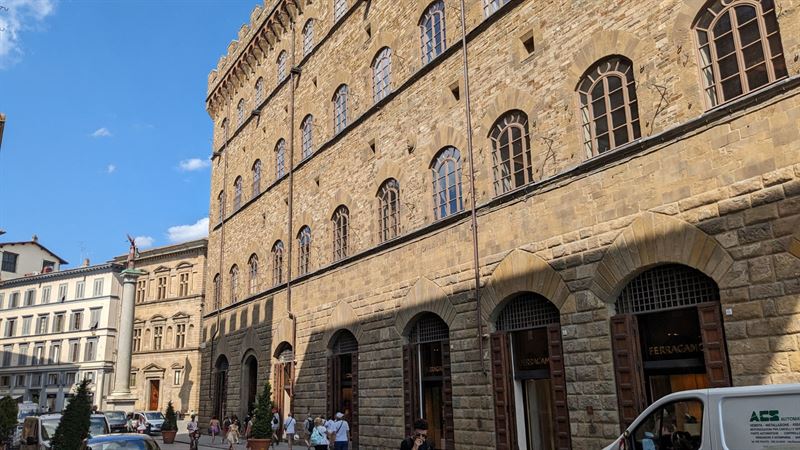
7. Fondazione Palazzo Strozzi – for a dash of contemporary culture
Palazzo Strozzi is, for Florence, a rare combination of ancient and contemporary life. It is a testament to the pride of the powerful merchant and banker, Filippo Strozzi, who dared to build a bigger palace than the Medici’s. As the closest rivals to the Medici, the princely Strozzi family were banished from the city by Cosimo the Elder but returned the richer, having established a banking dynasty in Lyon. This bombastic building has a rusticated façade and achieves a certain majesty, echoed by the inner courtyard. Such displays of ambition and ostentatious wealth were considered to be in poor taste in Renaissance Florence. Even so, as the quintessential 15th-century Florentine princely palace, Palazzo Strozzi was a highly influential model for centuries to come. The city is now a lively exhibition and cultural centre which has been fundamental in pushing the city into the twenty-first century. Florentines are also fans of the cool Strozzi Caffe off the courtyard.
Address: Piazza Strozzi, Florence
Web: www.palazzostrozzi.org -
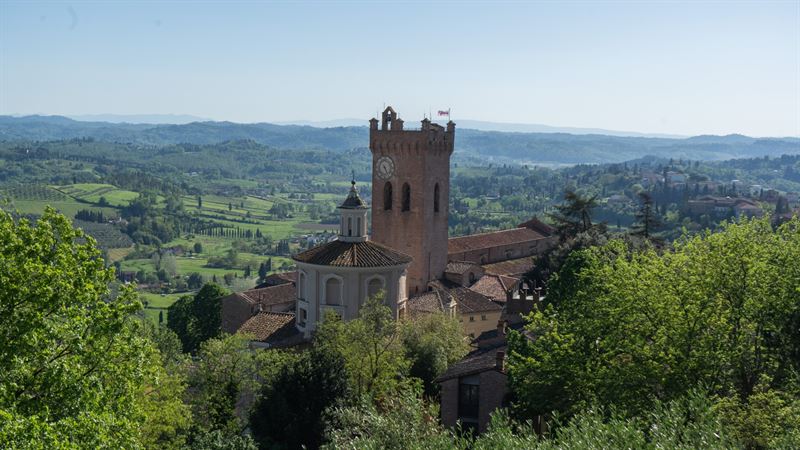
8. San Miniato walk for sunset views
Set south of the river Arno, San Miniato al Monte is one of the finest Romanesque basilicas in the city. Perched atop one of the highest points in Florence, it is also a magical spot for viewing the sunset. For romantics, it offers more inspiring vistas than from Piazzale Michelangelo. As the church closes at sunset, ideally combine a visit with a scenic sunset over the city and surrounding countryside. The present complex dates from 1018 and is a fine example of Florentine Romanesque. Admire the green-and-white banded marble façade. The palette for Florentine facades was generally white marble from Carrara, pink from Maremma and dark green from Prato. Inside, seek out the Cappella del Crocifisso, a tiny vaulted temple, and the 11th-century crypt. If you’re lucky, you’ll catch the monks focused on Gregorian chant in the late afternoon, at 5.30pm in summer, but an hour earlier in winter. Either walk up to the top or catch the number 12 or 13 bus.
Address: Via delle Porte Sante 34, Florence
Web: https://www.sanminiatoalmonte.it/ -
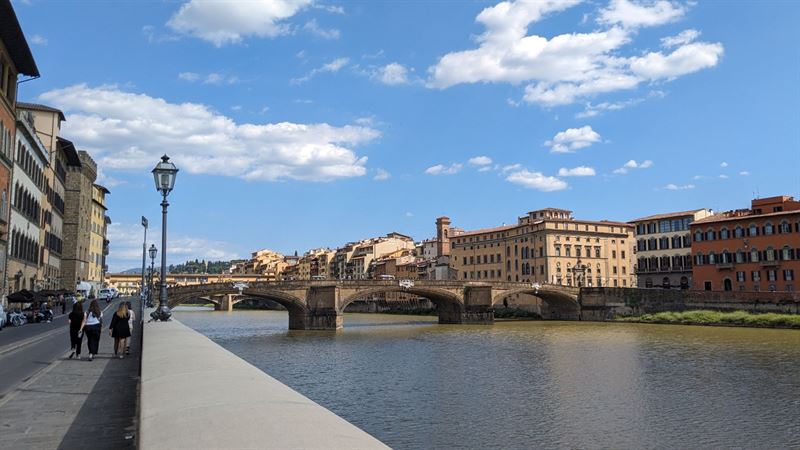
9. Explore the craft shops on the Oltrarno
Discover the Oltrarno neighbourhood's craft heritage on the so-called “Left Bank” of the city, across the river Arno. This bohemian district is studded with stylish bars and buzzy inns interspersed with antique shops, jewellery-makers, picture-restorers and bijou art galleries. This is a journey back into a bygone age, visiting ancient “botteghe” (artisans’ workshops). Despite tourism, this arty-crafty area remains authentic and is home to specialist artisans whose trades have survived in the same district since medieval times. Depending on your interest, call into craft shops run by carpenters, tailors, printmakers or leather-makers. This is the place to ponder the delights of buying bespoke furniture, lithographs, sculpture, or hand-tooled leather handbags. Explore on your own or go on an Oltrarno craft tour with Eating Italy. Their craft tour also takes you to places for tastings of Tuscan meats, cheeses and Cantucci biscuits.
Web: www.eatingitalyfoodtours.com/florence/tours/oltrarno/ -
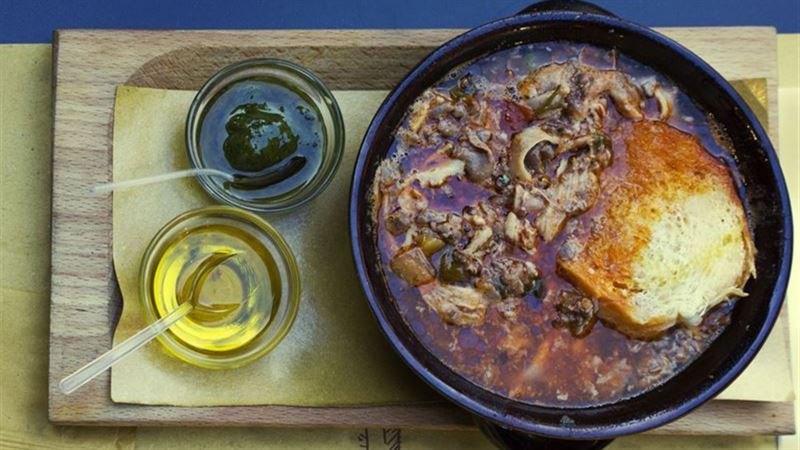
10. Eating Florence – a food trail around the Oltrarno
Savvy foodies cross the river to the Oltrarno, the arty-crafty, bohemian side of the city. This four-hour Florentine food safari, run in English, reveals the underbelly of Florence on an engaging walking tour. The Eating Italy tour offers insights into Florentine history as well as food. En route are delicious tastings of cheeses, cured meats (salumi) as well as crostini, wine, Florentine biscuits and ice cream. If you can’t make it, follow a version of the tour on your own, with tips below but to guarantee the tastings, you need to follow a tour.
If you have a strong stomach, one highlight is the Da Simone food stall (Piazza dei Nerli) for tripe (lampredotto), the typical Florentine street food. The tripe sandwich, literally made with “the fourth stomach of a cow” is enjoyed by everyone from Fiorentina football fans to artisans and aristocrats. Instead, Macelleria Mignani (Borgo San Frediano 127/r) serves tastings of fennel-infused salami. For the sweet-toothed, Pasticceria Buonamici (Via dell’Orto 12/r) demonstrates the making of cantuccini, the famous Florentine almond biscuits, baked by a father and daughter team. The’ll tell you why Tuscan bread is made without salt, supposedly because salt was once reserved for `precious’ foods such as salami. Fiaschetteria Fantappe (Via dei Serragli 47/r) should deliver your first glass of Chianti of the day, matched by a crostino toscano, crunchy bruschetta slathered in chicken liver.
Web: www.eatingitalyfoodtours.com/florence/tours/oltrarno/ -
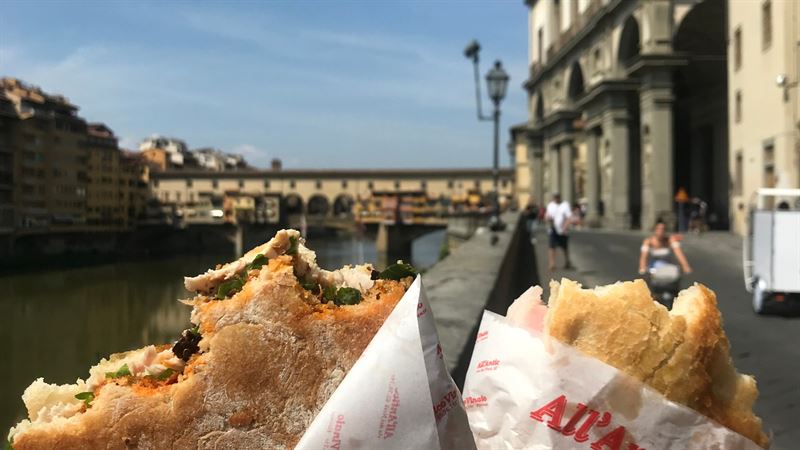
Eating and Drinking
Florentine food is meaty and macho, with wild boar, cow’s tripe and suckling pig washed down with full-bodied Chianti Classico. Florence is also the birthplace of the bistecca alla fiorentina, a chargrilled T-bone steak served seared on the outside and very rare (and warm but not hot) on the inside. Faint-hearted types can always opt for vegetable-based pasta sauces or retreat to the chic fashion bars for vegetarian crostini. There is an earthiness about most dishes which has made them almost universally popular. If in Tuscany in the autumn, tuck into the prized white truffles that appear on many menus. Consider heading to San Miniato, 30 minutes’ west of Florence, for its November White Truffle Fair, Tuscany’s finest.
-
La Bottega del Buon Caffe
This Michelin-starred riverside restaurant offers a relaxed version of fine dining and an innovative take on traditional Tuscan cuisine. The chefs believe in `farm to plate’ food, served from their 200-acre farm and wine estate in Borgo San Pietro, in Siena province. The feast is best sampled as a six (or eight) course tasting menu with or without wine-pairing. You can see the small but beautifully presented dishes being prepared in the show kitchen. Dishes include tomato and ricotta terrine, parmesan and courgette risotto, and red mullet with seasonal vegetables.
Address: Lungarno Benvenuto Cellini, 69/r, Florence
Web: www.borgointhecity.com -
Essenziale
This highly inventive, creative food is diametrically opposed to classic Tuscan cuisine. Set in the Santo Spirito area of the Oltrano, this daring restaurant delivers `essential’ good food, centred on tasting menus, called `experiences’. The look is techno-chic, with metallic skylights, and challenging menus to match. The ambitious menus are playful but not pricey, ranging from root vegetable risotto and a riff on Tuscan bread soup to wild flights of fancy, such as guinea fowl and passion fruit.
Address: Piazza di Cestello 3/r, Florence
Web: www.essenziale.me -
Buca Lapi
This atmospheric former coachmen’s inn is the oldest restaurant in town. It began as a rough-and-ready spot for tripe sandwiches but is now better-known for its hunky T-bone steaks (bistecca alla fiorentina) made from Chianina beef. The chickpea and cabbage soup is also tasty, as are their pastas and chocolate tart. Buca Lapi is a busy, boisterous place but, unlike many Florentine rivals, is not a tourist trap and treats customers well. Book this mid-priced inn well in advance.
Address: Palazzo Antinori, Via del Trebbio, 1/r, Florence
Web: www.bucalapi.com -
Il Santo Bevitore
On the Oltrarno, this stylishly retro restaurant is buzzing but mid-priced, with great appeal and atmosphere. Come for reliable seasonal produce and faintly creative Italian cuisine. Dishes range from chicken liver pate to truffle risotto or cinnamon crème brulée. It’s worth booking or waiting for a table as it’s deservedly popular, as is Il Santino, its offshoot, a Tuscan tapas-style wine bar next-door.
Address: Via Santo Spirito 64/r, Florence
Web: www.ilsantobevitore.com -
Trattoria Sostanza
This small, reasonably-priced inn is deeply traditional but unpretentious, very much old-fashioned Florence. The restaurant name says it all: Substance – a reliable restaurant around since 1869 but still popular with Florentines and even fashionistas, such as Miuccia Prada. Highlights include the artichoke tart, the sautéed chicken breast, the massive T-bone steak (bistecca alla fiorentina) and the meringue cake with red berries. If you’re sitting near the back, you can watch the chefs at work.
Address: Via del Porcellana, 25/r, Florence -
Trattoria Ruggero
Set near the Porta Romana, this archetypal Tuscan trattoria delivers classic dishes without the frills. Friendly and family-run, this is the place for an old-school Tuscan feast, beginning with crostini or artichokes sott’olio and moving onto tortelli stuffed pasta or, in spring, asparagus risotto. Main courses are meaty, from T-bone steak to pigeon, followed by Vin Santo and cantuccini biscuits.
Address: Via Senese 89/r, Florence -
Trattoria I’Raddi
Set in the bohemian Oltrarno, in the artisan San Frediano district, this traditional trattoria serves simple, inexpensive, unfussy food in a rustic setting. Choose from Tuscan cold cuts and cheeses to tortelli stuffed with Jerusalem artichokes. In autumn, opt for the peposo alla fornacina, a peppery beef stew or ribollita (a hearty bread-and-bean soup). The staff are young and keen.
Address: Via Ardiglione 47/r, Florence
Web: www.trattoriairaddi.it -
Gastronomia Galanti
Set under the arches of Piazza della |Liberta, this is an inexpensive spot for `lunch on the run’ or for aperitive (cocktails) and a bite to eat. Come for a glass of wine and a snack, or for something more substantial, such as ribollita, vegetable risotto, ricotta and spinach ravioli, or stuffed squid. The menu changes daily.
Address: Piazza dell Liberta 31/r, Florence
Web: www.gastronomiagalanti.com -
Cafes, Wine Bars and Gelaterie (ice cream parlours)
Try a Negroni cocktail in its birthplace or opt for a Campari Spritz or a great Super Tuscan. Florentine bars now range from retro to hip but most will take you comfortably from coffee to cocktails. Don’t neglect the classic cafes on Piazza della Repubblica or on Piazza della Signoria.
-
Caffe Rivoire
Rivoire is a classic people-watching spot on Piazza della Signoria. This old-world café was founded by a chocolate-maker to the Italian royal family in 1872. Come for a Negroni on the piazza or sip the silkiest, most heavenly hot chocolate in a panelled, chocolate-box interior.
Address: Piazza della Signoria 5/r
Web: www.rivoire.it -
Le Volpi e L’Uva
This relaxed, welcoming and well-run wine bar (enoteca) is a wonderful spot for a light lunch or supper. It’s relaxed setting for a bite to eat, matching Tuscan wines to superb regional cheeses, cold cuts and bruschetta.
Address: Piazza dei Rossi, 1/r, Florence
Web: www.levolpieluva.com -
Caffè degli Artigiani
A quaint neighbourhood café awaits in the Oltrano, in the Santo Spirito district. Homely not hip, this is a simple place for coffee and cake or crostini with anchovies or truffles. The café is a reminder of how well Oltrarno has settled into its revamp, with peaceful squares and pedestrian-friendly zones.
Address: Via dello Sprone 16/r, Florence
Web: www.firenze-oltrarno.net/caffeartigiani/ -
Gelateria della Passera
Set in the Oltrarno area, this is a place for proper gelato, not the over-sweet tsunami of ice cream that so often passes for home-made. Additive-free Tuscan flavours include chestnuts, honey, pine-nuts and ricotta from neighbouring Pienza.
Address: Via della Toscanella 15/r, Florence
Web: https://gelaterialapassera.wordpress.com/ -

Shopping
Shopping is a delight, from famous Florentine designers to authentic arts and crafts. The Florentine fashion industry predates the Renaissance: the merchants of Prato have long woven fine cloth for Florentine tailors to transform into lavish clothes. Craftsmanship and cool brands are not mutually exclusive. Florentines believe that looking good (fare bella figura) is an instinctive pleasure and a civic duty.
-
Designer shops
Chic Via Tornabuoni is lined with Florentine-born gems, such as Ferragamo and its Shoe Museum.
Salvatore Ferragamo: Palazzo Spini-Feroni, via Tornabuoni 4, www.ferragamo.it
Ferragamo Shoe Museum: Piazza Santa Trinita 5/r, www.ferragamo/com/museo
Roberto Cavalli: via Tornabuoni 83/r, www.robertocavalli.com
Gucci: via Tornabuoni 73/r, www.gucci.com
Emilio Pucci: via Tornabuoni 20/r, www.emiliopucci.com
Designer outlets: Thirty minutes from Florence, the Mall designer outlet showcases brands ranging from Pucci and Gucci to Armani and Zegna. A (paying) shuttle service is available from Florence.
Web: www.themall.it -
Craft workshops & speciality shops
For craft workshops, the Oltrarno is a good place in which to start. This hip neighbourhood is known for its `botteghe,’ workshops and studios where apprentices learn techniques passed down through the generations.
-
Il Torchio
Set in the Oltrano, is a creative bookbinders (legatoria) for custom-made books and hand-tooled paper creations.
Address: Via dei Bardi 17
Web: www.legatoriailtorchio.com -
Alessandro Dari
A master goldsmith and jeweller who operates from an intriguing workshop in the Oltrarno, close to the Ponte Vecchio.
Address: Via San Niccolò 115/r
Web: www.alessandrodari.com -
Angela Caputi
She makes stylish costume jewellery in the Oltrarno. Her bold bangles are also on sale in Palazzo Strozzi and are on display in New York’s Museum of Metropolitan Art.
Address: Via Santo Spirito 58/r
Web: www.angelacaputi.com -
Aprosio
Is the place for jewellery and accessories made from minute glass beads made from Murano glass or Bohemian crystal.
Address: Via del Moro 75
Web: www.aprosio.it -
Officina di Santa Maria Novella
This is an historic herbalist and perfumery near Santa Maria Novella. It sells upmarket fragrances and potions.
Address: Via della Scala 16
Web: www.smnovella.it -
Mercato Centrale
This covered 19th-century iron-and-glass market houses a food hall on the top floor. The ground floor showcases the best local produce, from cold cuts and mozzarella to olive oil and ice cream. Upstairs, the food court serves lunchtime tapas, from crostini with chicken’s liver to cheese platters of Pecorino from Pienza, meaty porchetta sandwiches and truffled pasta dishes.
Address: Mercato Centrale, Piazza del Mercato Centrale, via dell’Ariento 4, Florence
Web: www.mercatocentrale.it -
Eataly Firenze
Oscar Farinetti’s famous foodie emporium is an international brand with a popular branch in Florence. As a champion of Slow Food, Eataly offers foodstuffs that make good souvenirs. Set close to the Duomo, it makes a handy spot for deli treats but you can do better than their canteen-like lunch.
Tel: www.eataly.net/it
Web: Via Martelli 22/r, 50129, Florence -
Parking & getting around
Parking in Florence can be a major headache so if you can arrive by train or coach, that is infinitely preferable. Florence is a ZTL, meaning that non-resident traffic is banned from the historic centre. This is indicated by signs with a red circle on white accompanied either by the abbreviation "ZTL" or spelt out as Zona Traffico Limitato (Zone of Limited Traffic). Only residents or traders with special permits are allowed in. Any contraventions are likely to get picked up by cameras (which monitor all entry points). Transgressions will result in fines of upto €200 and you can be traced through your car rental agency.
The key car parks are: at Santa Maria Novella train station; at the Fortezza da Basso; at Piazza della Liberta; at Piazza della Beccaria; at Mercato Sant’Ambrogio; in the Oltrarno (near Porta Romana).
Web: www.firenzeparcheggi.it/
For the train station and historic area: Florence’s most convenient underground parking is Santa Maria Novella, under Piazza della Stazione at the train station. Be warned that there are no day/overnight rates and that parking is more expensive here than elsewhere, roughly twice the average price. Alternative parking for the train station and Santa Maria Novella area: Use the underground parking located under the massive Fortezza del Basso (Medici fortress turned convention centre).
For the Duomo area, use Parcheggio Parterre, underground parking just north of Piazza della Libertà at Via Madonna Della Tosse 9. It's a twenty-minute trek to the historic heart but you can catch a bus on Piazza Libertà. Buses no. 1 and 7 go down Via Cavour to the Duomo area, and then go past Santa Maria Novella to the train station.
For the eastern side/Santa Croce area, use Parcheggio Piazza Beccaria, underground parking just inside the ring road on Piazza Beccaria, which lies east of the Sant'Ambrogio market area. From here, you can walk or catch a minibus (electric bus) into the city centre.
Buses
In most cases, you will find it easier to walk than to take public transport. Electric buses operate in the historical centre but tend to go circuitous routes. The main lines are: C1, C2, C3 and D, with the C1 route covering some of the most important museums (in a roundabout way).
Tickets should be bought before getting on the bus. A 90 minutes ticket must be validated (punched) in the machines on the bus. If you buy a ticket from the driver, it costs a little more and also needs to be validated on board.
ATAF bus information: ATAF Hall inside the Santa Maria Novella Train Station. Or call ProntoAtaf, T: 800 424500 (free phone within Italy).





















